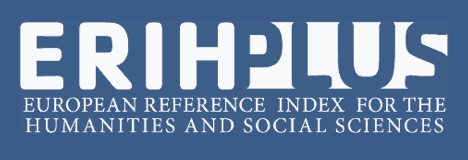SOCIO-SPATIAL DYNAMICS AND NEW TERRITORIAL CONFIGURATIONS: THE URBAN DYNAMICS OF RIDE - GRANDE TERESINA
Abstract
The transformations caused by the socio-spatial dynamism implies the emergence in the Brazilian urban network of new territorial configurations, such like: the metropolis, the scattered cities, the urban basins, the agglomerations urban, among others. Within that universe, the focus of analysis of this work was the so-called Integrated Economic Development Regions (RIDE), more specifically the RIDE - Grande Teresina. The purpose of the research is to analyze the urban dynamics of said arrangement, since it has characteristics different from those undertaken in metropolitan spaces. To reach our objective we base the discussions based on the following authors: Corrêa (2011); Lencioni (2011); Ferreira (2016); Moura (2012); Limonad (2007); Gurgel (2017); Egler (2010), among others. The studies done were also evaluated on the evolution of the Brazilian urban network, such as: IPEA (2002); IBGE (2008, 2013 and 2016) and Observatorio de las Metropolis (2004). Also, the results of the Integrated Region. We show that the urban evolution of the RIDE It presents an urban dynamic governed by the regional capital (Teresina) with a low integration between the federated entities that compose it, and also, highlights the divergence between the socio-spatial process and the institutional process of the RIDE.
References
CODEVSAP. Companhia de Desenvolvimento dos Vales do Parnaíba e São Francisco. Plano de Ação Integrado e Sustentável para a RIDE Grande Teresina. Produto II: Diagnóstico Situacional Participativo. 2013. Disponível em: < https://docplayer.com.br/13435126-Plano-de-acao-integrado-e-sustentavel-para-a-ride-grande-teresina-produto-ii-diagnostico-situacional-participativo.html>. Acesso em: 15 mar. 2019.
CORRÊA, R. L. As pequenas cidades na confluência do urbano e do rural. GEOUSP Espaço e Tempo. n. 30, p. 5-12. 2011. Disponível em: < http://www.revistas.usp.br/geousp/article/view/74228/77871>. Acesso em 18 out. 2018.
______. Estudos sobre a rede urbana. Rio de Janeiro: Bertrand brasil, 2006. 332p.
EGLER. Claudio A. G. Apontamentos sobre a rede urbana e políticas públicas. In: MATOS, Ralfo; WEBER, Soares (Orgs.). Desigualdades, redes e espacialidades emergentes no Brasil. 1 ed. Rio de Janeiro: Garamond, 2010. p. 91-114.
FERREIRA, A. Caminhando em direção à metropolização do espaço. Geousp – Espaço e Tempo (Online), v. 20, n. 3, p. 441-450. 2016. Disponível em: < http://www.revistas.usp.br/geousp/article/view/123824/124664>. Acesso em: 22 abr. 2019.
FIRKOWSKI, O. L. C. Por que as Regiões Metropolitanas no Brasil são regiões mais não são metropolitanas. Revista Paranaense de Desenvolvimento. n. 122, p. 19-38. 2012. Disponível em: http://www.ipardes.pr.gov.br/ojs/index.php/revistaparanaense/article/view/465/700>. Acesso em: 26 abr. 2019.
GOTTMANN, J. Megalopolis: the urbanized northeaster seaboard of the United States. New York: The Twentieth Century Fund., 1961. 810p.
GURGEL, A. P. C. As metrópoles do interior do Nordeste: a caracterização de um tipo metropolitano regional. Cadernos Metrópole, v. 19, n. 40, p. 841-864. 2017. Disponível em:
IBGE. Instituto Brasileiro de Geografia e Estatística. Arranjos populacionais e concentrações urbanas no Brasil. IBGE. Coordenação de Geografia. 2. ed. Rio de Janeiro: IBGE, 2016. Disponível em: < https://biblioteca.ibge.gov.br/visualizacao/livros/liv99700.pdf>. Acesso em 20 set. 2018.
______. Divisão Urbano-Regional. IBGE. Coordenação de Geografia. Rio de Janeiro: IBGE, 2013. Disponível em: < ftp://geoftp.ibge.gov.br/organizacao_do_territorio/divisao_regional/divisao_urbano_regional/documentacao/divisao_urbano_regional_apresentacao_do_trabalho.pdf.>. Acesso em: 20 de set. 2018.
______. Censo Demográfico 2010. Coordenação de Geografia. Rio de Janeiro: IBGE, 2010.
______. Região de Influência das cidades 2007 (REGIC). Coordenação de Geografia. Rio de Janeiro: IBGE, 2008. Disponível em: < https://www.mma.gov.br/estruturas/PZEE/_arquivos/regic_28.pdf>. Acesso em: 20 set. 2018.
IPEA. Instituto de Pesquisa Econômica Aplicada. Configuração atual e tendências da rede urbana do Brasil. Brasília. (Série caracterização e tendências da rede urbana do Brasil, 1). Convênio IPEA, IBGE, UNICAMP/IE/NESUR, IPEA. 2002. Disponível em: < http://www.ipea.gov.br/portal/images/stories/PDFs/livros/livro_caracterizacao_tendencias_v01.pdf>. Acesso em: 20 set. 2018.
LENCIONI, S. A metamorfose de São Paulo: o anúncio de um novo mundo de aglomerações difusas. Revista Paranaense de Desenvolvimento. v. 120, p. 133-148, 2011. Disponível em:< http://www.ipardes.pr.gov.br/ojs/index.php/revistaparanaense/article/view/176/672>. Acesso em: 20 set. 2018.
______. Metrópole, Metropolização e Regionalização. São Paulo: Consequência, 2017. 262p.
LIMONAD, E. Nunca Fomos Tão Metropolitanos! In: Nestor Goulart Reis; Martha S. Tanaka. (Org.). Brasil - Estudos sobre Dispersão Urbana. 1ed.São Paulo: Via das Artes - FAPESP, v. 1, p. 183-212, 2007.
MOURA, R. A dimensão urbano-regional na metropolização contemporânea. EURE (Santiago), Santiago, v. 38, n. 115, p. 5-31. 2012. Disponível em: < https://scielo.conicyt.cl/scielo.php?script=sci_arttext&pid=S0250-71612012000300001>. Acesso em: 20 de mar. 2019.
OBSERVATÓRIO DAS METROPOLES. Analise das Regiões Metropolitanas do Brasil: identificação dos espaços metropolitanos e construção de tipologias. Rio de Janeiro: Observatório. 2004. Disponível em:
SASSEN, S. El reposicionamiento de las ciudades y regiones urbanas en una economía global: ampliando las opciones de políticas y gobernanza. EURE (Santiago), 33(100), 9-34. 2007.Disponível em:< https://dx.doi.org/10.4067/S0250-71612007000300002>. Acesso em 12 jan. 2019.
SCOTT, A.; Agnew, J.; Soja, E. e Storper, M. Cidades-regiões globais. Espaço e Debates: Aliança e competição entre cidades. São Paulo, n. 41, 11-25, 2001.
SOJA. E. W. Postmetropolis: Critical Studies of Cities and Regions. Oxford: Blackwell Publishing, 2000. 440p.

This work is licensed under a Creative Commons Attribution-NonCommercial 4.0 International License.
Policy Proposal for Free Access Journals
Authors who publish in this journal agree to the following terms:
a. Authors retain the copyright and grant the journal the right of first publication, with the work simultaneously licensed under the Creative Commons Attribution License which allows the sharing of the work with acknowledgment of the authorship of the work and initial publication in this journal.
b. Authors are authorized to take additional contracts separately, for non-exclusive distribution of the version of the work published in this journal (eg publish in institutional repository or as a book chapter), with acknowledgment of authorship and initial publication in this journal.
c. Authors are allowed and encouraged to publish and distribute their work online (eg in institutional repositories or on their personal page) at any point before or during the editorial process, as this can generate productive changes, as well as increase the impact and The citation of published work (See The Effect of Free Access).





















